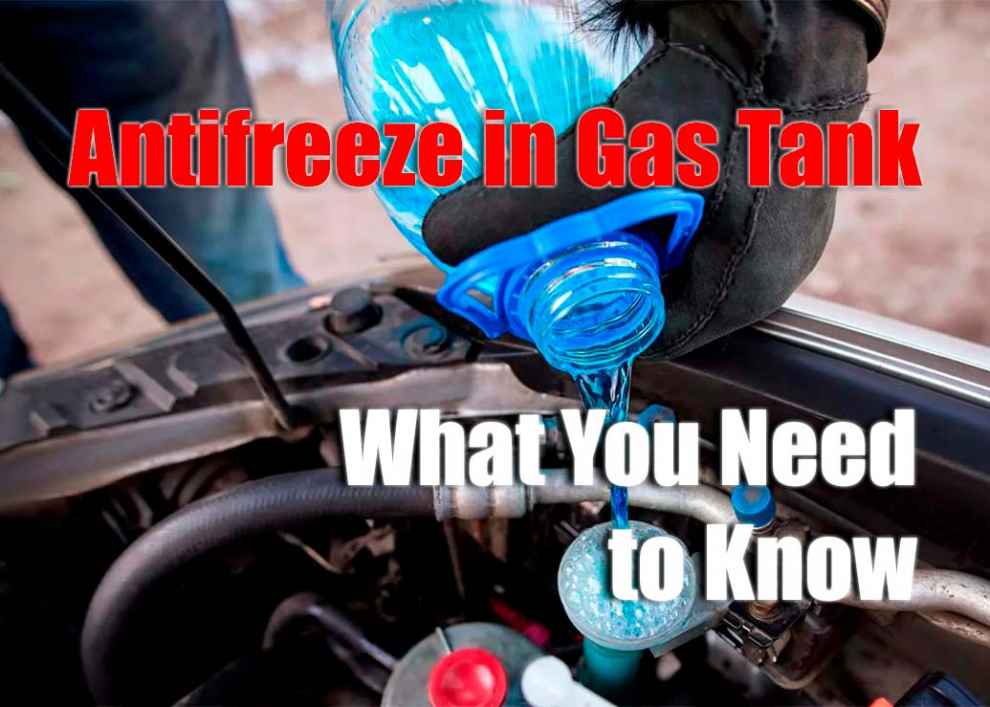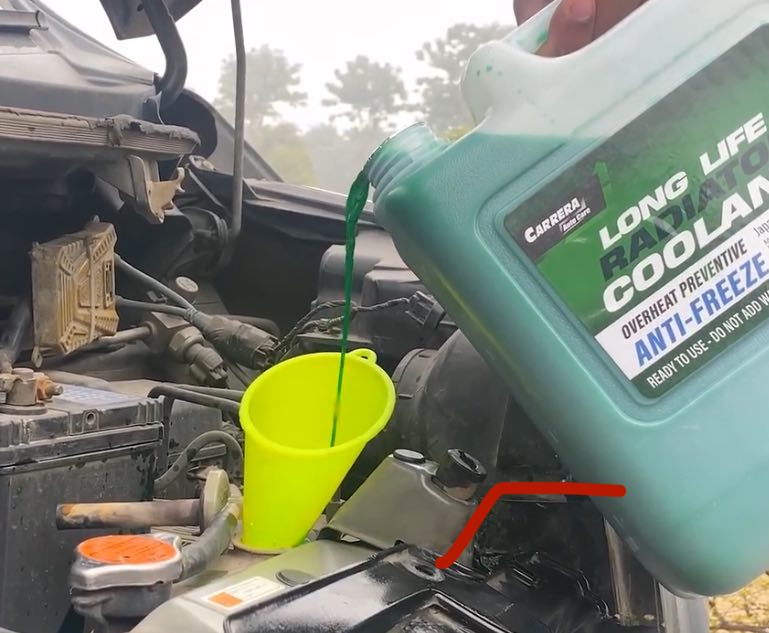Antifreeze is a crucial component of a car’s engine, protecting against extreme temperatures and preventing the system from freezing in cold weather. However, antifreeze in a gas tank can have potentially devastating consequences if not detected and handled correctly. In this article, we’ll discuss what you need to know about antifreeze in a gas tank so you can spot any potential problems and take the necessary steps to keep your car running safely and efficiently. We’ll explore the possible causes of antifreeze entering the gas tank, how to recognize signs that might indicate its presence, and what you should do if you find it there. With this information, you’ll be better equipped to diagnose any issues related to antifreeze contamination and ensure your vehicle remains in top condition for years.
How Does Antifreeze Get into Gas Tank?
Antifreeze can enter the gas tank in many ways. Leaks from the cooling system are the most common cause of antifreeze in the gas tank. If there’s a leak in the system, antifreeze can seep into the fuel lines and accumulate in the gas tank. Another potential source is topping up an engine with an incorrect mixture of coolant and water. If too much antifreeze is added to an engine, it could enter the fuel lines and end up in the gas tank. Poor maintenance or lack of cleanliness around your car’s engine can also lead to contamination if dirt or debris enters through openings or cracks in fuel lines, mixing with other liquids and leaking into the gas tank. Lastly, cross-contamination from another vehicle’s antifreeze-filled radiator can occur if both cars’ radiators are connected simultaneously during maintenance work on either vehicle. It could cause some of that other car’s contaminated liquid to leak into your car’s fuel system. Also read about Best Coolant for Jeep Wrangler and Grand Cherokee.
Dangers of Antifreeze in Gas Tank?
Antifreeze in the gas tank can cause several problems, seriously impacting your car’s performance. Firstly, the antifreeze will reduce the octane rating of your fuel, causing it to burn less efficiently. It will affect engine performance and could lead to reduced power output and higher emissions. Secondly, as antifreeze breaks down with time and exposure to heat, it can create a gunky sludge that coats fuel system components, like injectors and carburetors. This buildup can affect how much air and fuel are delivered to the cylinders, resulting in poor engine performance. Lastly, if enough antifreeze is present in the gas tank, it can dilute the lubricating oil used by an engine’s pistons and other moving parts, leading to wear and tear on these components that could eventually cause them to fail prematurely.
Signs and Symptoms of Antifreeze in Gas Tank
The signs and symptoms of antifreeze in the gas tank can manifest in various ways, depending on the severity and duration of exposure. In some cases, antifreeze entering the fuel system may not produce any noticeable symptoms at all. However, if left undetected for too long, it can cause serious damage to the vehicle and its components. Common signs and symptoms of antifreeze in the gas tank include:
-
Engine misfires or stalling: Antifreeze entering the fuel system can cause a misfiring of the engine or even complete stalling. It is due to the antifreeze preventing proper combustion and reducing power.
-
Reduced power output: The engine may also experience a general decrease in power output, leading to difficulty accelerating or maintaining speed.
-
Reduced fuel economy: The presence of antifreeze in the fuel tank can also cause an increase in fuel consumption. It is because the engine does not receive as much fuel as it needs, causing it to work harder and use more gas than usual.
-
Poor acceleration: Antifreeze in the gas tank can reduce fuel efficiency and cause poor acceleration as it takes more energy for the vehicle to move forward.
-
White exhaust smoke: Exhaust with a white hue is one of the most visible signs of antifreeze in gasoline for some time. It is caused by unburned ethylene glycol-based coolants expelled through the exhaust pipe and other combustion vapors.
-
Odor of burning coolant: Another symptom of antifreeze in the gas tank is a strong smell of sweet-smelling chemicals, like maple syrup or other sweet-smelling substances.
-
Check Engine Light: One sign of antifreeze entering the gas tank is that the Check Engine Light may come on due to misfiring and poor combustion.
How to Remove Antifreeze from Gas Tanks
If you suspect antifreeze in your gas tank, it’s best to act quickly before any further damage is done. The first step is to empty the gasoline and replace it with fresh fuel. You should also inspect all fuel system components for leaks or damage caused by exposure to antifreeze; if any pieces need replacing, they should be done immediately. Next, use an additive specifically for removing contaminants like antifreeze from gasoline tanks; these products can help break down and dissolve any sludge buildup caused by prolonged exposure to ethylene glycol-based coolants. Finally, consider adding a gasoline stabilizer to help prevent further deterioration due to contaminated liquids over time.
Conclusion
Antifreeze in the gas tank can cause various issues, from reduced power output to increased fuel consumption. It’s important to understand how antifreeze can enter the gas tank and be alert for any signs or symptoms that may be present. If you detect antifreeze contamination, take steps to remove the contaminated fuel and replace it with fresh gasoline, as well as have all fuel system components checked and replaced if necessary. With this information in mind, you’ll be better prepared to spot any potential problems related to antifreeze contamination and act if needed, helping maintain your vehicle’s performance for many years.

 Engine misfires or stalling: Antifreeze entering the fuel system can cause a misfiring of the engine or even complete stalling. It is due to the antifreeze preventing proper combustion and reducing power.
Engine misfires or stalling: Antifreeze entering the fuel system can cause a misfiring of the engine or even complete stalling. It is due to the antifreeze preventing proper combustion and reducing power.
Add Comment